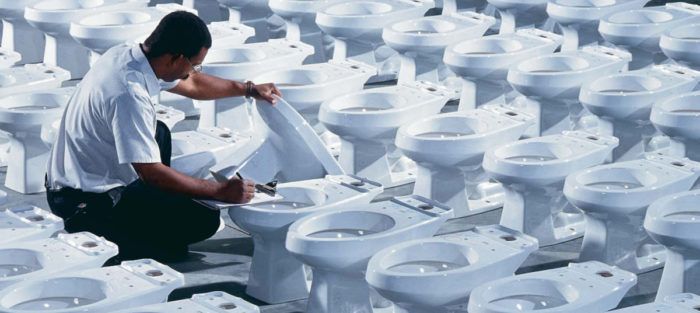
Synopsis: This article explains how 1.6-gal. toilets are designed, built, and tested, why some toilets flush better than others, and what some of your options are when choosing a toilet. Included is a sidebar on incinerating and composting toilets for locations without septic tanks.
At first, the toilets in our house were merely sluggish. Then they got slower and slower until they didn’t flush at all. But the toilets weren’t clogged. Something was in the sewer line. So I rented a sewer snake, unscrewed the clean-out, and fed the hungry snake down the chute. In it went—10 ft., 25 ft., 40 ft. Still, the pipe didn’t drain. As I pondered the problem, my young son stuck his head out the window, his little fists full of his favorite action figures, the Teenage Mutant Ninja Turtles. “Turtles live in the sewer, Daddy,” he said.
After the snake failed to hit paydirt, I retracted it and fed a garden hose down the sewer line. When the hose could go no farther, I turned up the pressure and just let the water eat. The hose had stewed in the sewer no more than five minutes when a dozen or so plastic Teenage Mutant Ninja Turtles, all horribly chewed by the sewer snake, burbled to the surface. I coiled up the hose and broke the news to my son.
Gone are the days when we could flush toys
After our sewer was deturtled and the attendant blockage removed, our toilets flushed magnificently. What was amazing was that all those Teenage Mutant Ninja Turtles could ever have been flushed down the toilet at all. But those were the days of the 5-gal. flush. With that much water chasing after them, an entire flotilla of Ninja Turtles could’ve been flushed home at once—and might have been.
Times have changed since that unclogging. My son is in high school. And toilet-flushing capacity dropped from 5 gal. to 3.5 gal., down to the current nationally mandated standard of 1.6 gal.
Our old 5-gal. toilets could flush turtles, cigars, feminine-hygiene products, bullets, Popsicle sticks and an occasional diaper with little effort. The new 1.6-gal. toilets sometimes struggle to flush our humble daily loads of human waste. However, the law’s the law, as those who favor the law are fond of saying. And the law is the National Energy Policy Act of 1992, which requires that all toilets made or sold in this country meet new federal water-efficiency standards. To conserve water, those standards set the upper limit of a single flush at 1.6 gal. The law took effect in 1994 for residential toilets and in 1997 for commercial toilets.
How 1.6-gal. gravity toilets work
Regardless of price or style, all gravity toilets depend on gravity to pull the water—and waste—through the system. When the handle is pushed, a flush valve opens, and the water in the tank drains into the bowl, either through rim openings, through the large siphon-jet opening across from the drain at the bottom of the bowl, or through a combination of both. The gravity-fed speed of the water pushes the waste through the trap and into the drain.
For more photos, drawings, and details, click the View PDF button below:
Fine Homebuilding Recommended Products
Fine Homebuilding receives a commission for items purchased through links on this site, including Amazon Associates and other affiliate advertising programs.

Get Your House Right: Architectural Elements to Use & Avoid

All New Bathroom Ideas that Work

A Field Guide to American Houses


























